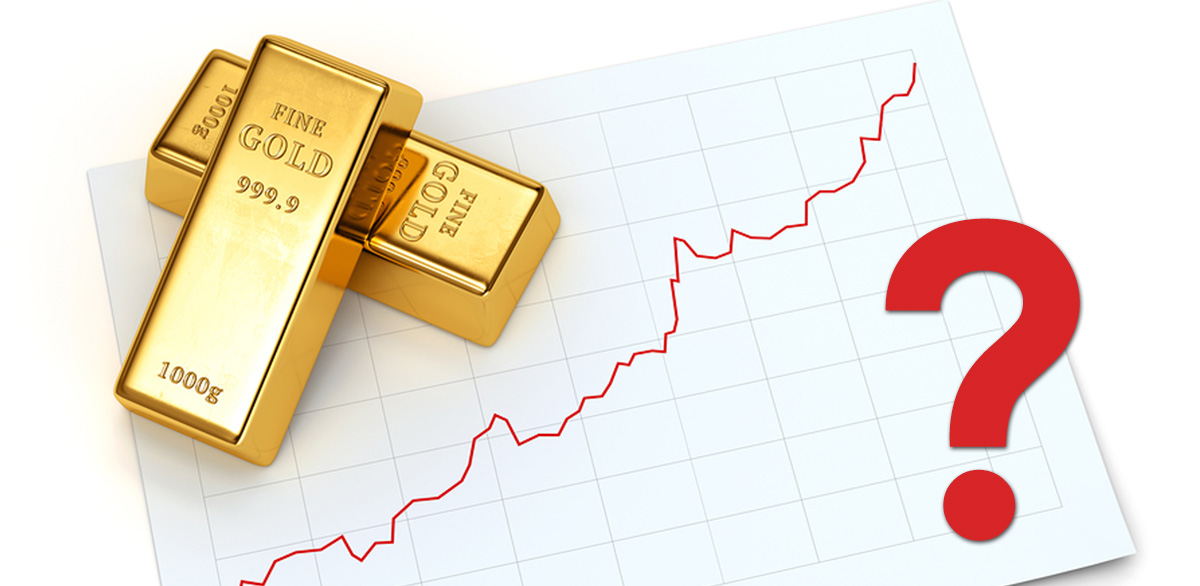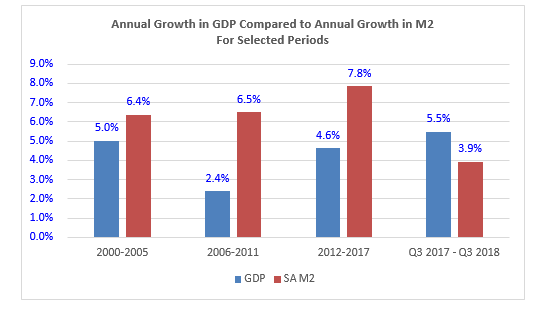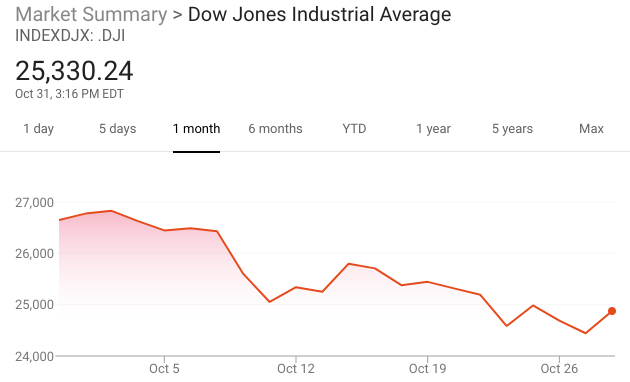
The summer doldrums for gold prices are officially over! The price of gold has been steadily gaining in the second month of fall amid repeated stock market selloffs. By mid-October, the yellow metal reached a 2-1/2 month high, and many analysts are predicting prices will continue to climb, consolidate briefly, and then move higher in a ‘golden staircase’ pattern.[1][2]
One of the world’s leading precious metals research consultancies, Metals Focus, “says gold’s recent ‘relief rally’ has more room to run and could carry the metal over $1,300 an ounce in the months ahead.”[3]
What’s driving gold prices up? Let’s examine the factors influencing the price of gold.
The Factors That Have Investors Turning to Gold
Stock markets ‘remain shrouded in a thick blanket of risk’ triggered by negative news from around the world.–Stephen Innes, head of Asia Pacific trading for the foreign exchange firm Oanda.[4]
Fears of the consequences of the trade war on an overheating and leveraged economy have been swirling for months, but Wall Street players chose to blindly ride the bull run until those threats became market realities. Stock market sentiment quickly shifted in the second week of October. Below are some of the issues rattling investors.
1. Rising Interest Rates
September closed with another Federal Reserve interest rate hike, bringing the target range to between 2 percent and 2.25 percent. Every Fed policymaker supported the increase, revealed minutes from the September meeting. One more hike is predicted for this year and three in 2019.
While Fed members may be on board with the interest rate increases, nearly everyone else is not: the President, analysts, and, of course, Wall Street.[5]
Why so much concern over higher rates? Bonds become more competitive with stocks. The cost of servicing debt rises. Consumers cut back. Corporate profits suffer.
Learn more in “Why Stock Market Volatility Is Here to Stay.”
One analyst is even arguing that the Fed’s policy of monetary tightening is shrinking the money supply. The growth of the supply of money exceeded the expansion in nominal GDP from 2000 to 2017, but in the last year this trend reversed:

Chart image via CNBC.
A dwindling money supply could stunt the growth of the economy and the financial markets.[6]
It’s an equation for recession and rising gold prices.
‘We are entering a new paradigm, where any further rate hike could be a sign that the economy is overheating a bit, which should be more positive for gold and problematic for equities,’ remarked Matthew Turner, a commodity strategist at Macquarie.[7]
2. Fears of Recession
Just two years—that’s how long two-thirds of surveyed business economists in the U.S. say we have until the next recession hits. The greatest risk to the second-longest economic expansion in history? Trade policy.[8]
A closer look at third-quarter economic growth reveals the economy is slowing. While the Commerce Department indicated the economy grew at a 3.5 percent annual rate last quarter, economists concluded that it was really only 1.4 percent. Companies stockpiling parts and goods before the next round of tariffs in January accounted for the 2.1 percent difference.
Investment in housing, equipment, business structures, intellectual property, and software shrunk .3 percent, resulting in the worst third quarter performance in years.
Construction equipment manufacturer Caterpillar disappointed investors with its reported third-quarter earnings. Considered a bellwether for the U.S. economy, the company predicted trade tariffs will cost it about $40 million in the fourth quarter. Harley-Davidson expects an equally sized hit. Both companies planned to pass the rising cost of business onto consumers.[9]
Worse, nearly a third of the paltry 1.4 percent growth came from government spending, including the deal last winter that bloated the federal budget deficit by 20 percent.
What about those corporate tax cuts? They’re driving more stock buybacks than real investment.
‘We continue to expect growth to slow from here as the sugar high in consumer spending turns into a sugar low,’ explained Bricklin Dwyer, an economist at BNP Paribas.
And quite a low it will be. The U.S. Treasury Department expects government borrowing this year to be $1.34 trillion, more than twice that of 2017.[10]
Rising interest rates and stock market decline or volatility were the second leading risk factors the economists cited.
3. Elevated Geopolitical Risks Effecting Stocks
Wall Street isn’t the only place investors have been unloading stocks. European and Asian equity markets have also been shaken lately. Around the world, investors are frightened by the “increasingly fractious global geopolitical outlook.”[11]
Trade War Escalates
Should November talks between President Trump and Chinese President Xi Jinping fail to move both countries toward a resolution of the trade war, Trump warned he “has billions of dollars’ worth of new tariffs ready to go.”
If the President follows through on his threat of $267 billion more in tariffs, nearly all Chinese imports would be taxed by early December.[12]
Italy Financial Collapse
Recently, the European Union commission rejected the draft budget the Italian government submitted. With the populist administration in Rome dragging its feet to rein in spending, investors are concerned about the havoc fiscal irresponsibility in the eurozone’s third-largest economy could wreck on the rest of the union.[13]
Chinese Stock Market Drops
Despite euphemistic official statements, the trade war could be taking a toll on Chinese equities, signaling trouble ahead for the world’s second largest economy. Similar to the U.S. market, recent gains appear fragile under the threat of additional trade tariffs.[14]
Brexit
Britain’s rocky divorce from the EU has been shaking investor confidence, which recently hit its lowest level in at least 23 years, reported the financial services firm Hargreaves Landsdown. The FTSE is understandably in correction territory.[15]
“Elevated geopolitical risks and pressure on equity markets have created a supportive setting for gold buying,” noted Nicholas Snowdon, a metals strategist at Deutsche Bank.[16]
4. Stock Market Volatility
Gold has been riding the recent wave of market volatility—straight up! With its oftentimes negative correlation to paper assets, the yellow metal has benefitted from the repeated stock selloffs.[17]
The concerning combination of rising interest rates and sluggish corporate earnings growth—a potential harbinger of an overall economic slowdown—sent the major indexes spiraling downward in October 2018:
- Dow dropped 6.7 percent
- S&P 500 shed 8.8 percent
- Nasdaq lost 10.9 percent

And the worst may be yet to come. Sam Stovall of CFRA Research thinks “the stock-market correction has a little bit more room to fall in the short term”:
‘Recent company comments revealed that fundamental fears are finally coming to fruition, now that Wall Street can no longer deny that global trade disputes are pressuring multinationals’ forward guidance,’ Stovall recently wrote.
Many analysts foresee more than a mere correction on the horizon. Recently, the IMF reported that the world economy is in worse shape than it was before the last financial meltdown due to the debt crisis resulting from ultra-low interest rates.
When the next crash hits—as soon as 2020 according to JP Morgan experts—central banks will not have the same resources to prevent a repeat of the Great Depression.
Read more in “Why the Next Financial Crisis Could Be Worse than 2008.”
Gold Reclaims Safe Haven Status
The dollar may have served as the preferred safe haven all summer when trade war threats loomed on the periphery, but now the consequences of protectionism are being felt right here at home in the form of diminished corporate earnings. Investors are finally feeling the pain of profit losses and seeking the true safety of gold.
Read more about why gold is a safe haven investment.
Even as the U.S dollar firms and the 10-year Treasury bond yield rises, gold continues to rally. The yellow metal’s resilience suggests this trend will continue.[18]
TD securities analysts predict gold prices to rise through the end of 2018 and into 2019 as the dollar softens.
Read more about the dollar’s expected downfall in “Is President Trump Telling You to Buy Gold Now?”
The Canadian banks forecasts the price of gold to average $1,225 an ounce in the fourth quarter and move into the $1,300s by the end of 2019.[19]
Market factors and expert predictions aside, history shows that commodities prices can be highly cyclical. After the summer pullback, it’s time for an upturn in gold prices. Those investors who took advantage of bargain prices could soon be rewarded.[20]
Many major Wall Street investors and billionaire collectors have been moving into gold before prices takeoff. Learn more in “Smart Money Buying Up Physical Precious Metals, Sales Skyrocket 126%.”


